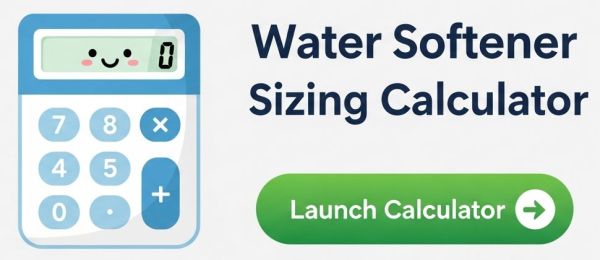How to Fix Hard Water: A Complete Guide to Water Softeners
I still remember the day I realized my house had a secret enemy. An invisible force that was ruining my skin, fading my clothes, and slowly strangling my plumbing. That enemy was hard water. The journey from that frustrating discovery to the crystal-clear, silky-smooth water I enjoy today was long and filled with research. I created this guide—the most comprehensive guide you’ll find anywhere—to make your journey shorter, cheaper, and much, much simpler.
Chapter 1: Understanding the Enemy – What Is Hard Water, Really?
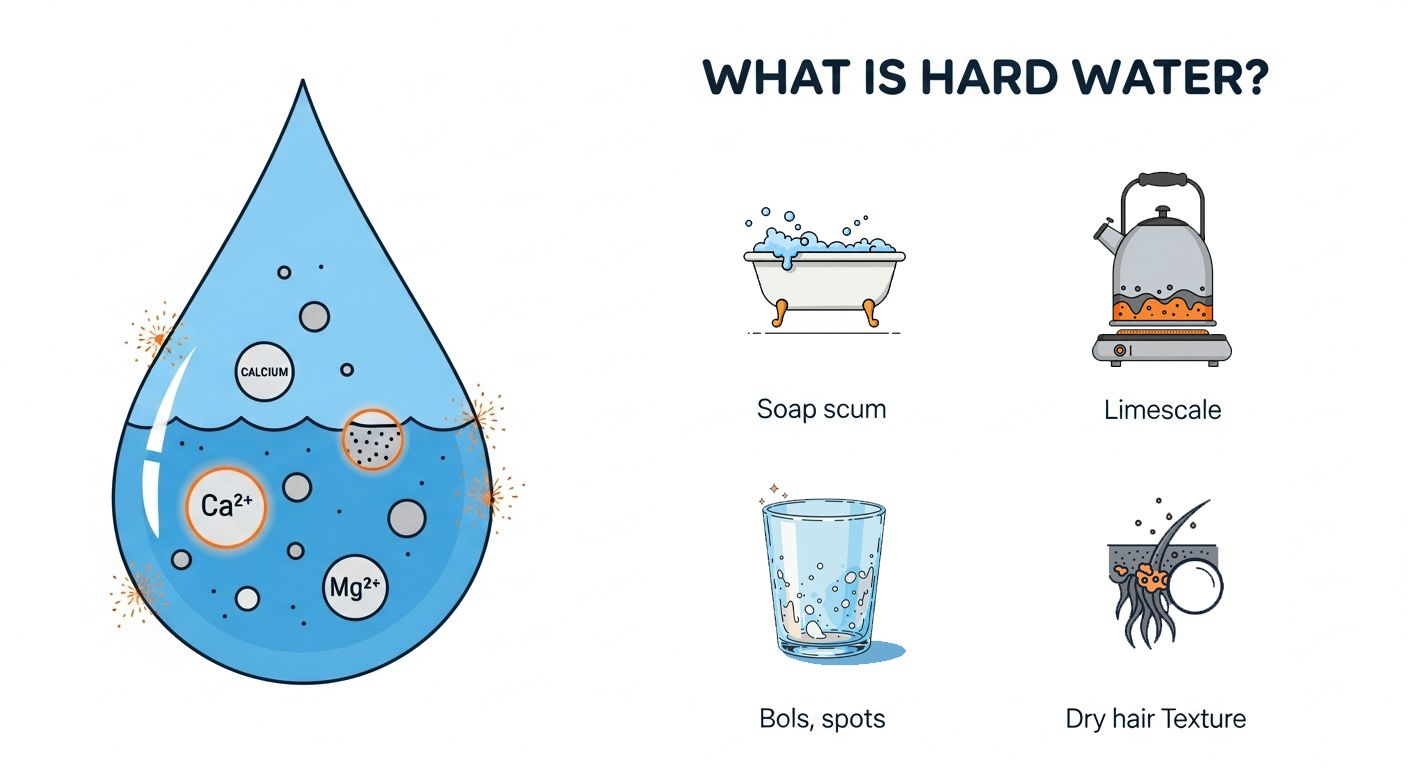
Before we can talk about the solution, we must fully understand the problem. Hard water isn’t “dirty” water; it’s water that’s packed with dissolved rock, primarily calcium and magnesium. As rainwater seeps through the earth, it dissolves these minerals from limestone and chalk, carrying them directly to your tap.
This single fact is the root cause of a cascade of problems throughout your home. The minerals react with soap to create a sticky, insoluble film called soap scum. When heated, these minerals precipitate out of the water and form a rock-hard scale, known as limescale, that acts like cement on any surface it touches. It’s a relentless, silent assault on your home and your comfort.
Do You Have Hard Water? The Telltale Signs
If you’re reading this, you probably suspect you have hard water. But the signs are often more widespread than you realize. It’s not just one thing; it’s a collection of daily frustrations that point to a single culprit. Recognizing these symptoms is the first step toward reclaiming your home.
From the chalky film on your glass shower door to the frustrating lack of lather from your favorite shampoo, the evidence is everywhere. I’ve compiled a complete diagnostic guide to help you identify every sign, from the obvious to the subtle. If you’re experiencing even a few of these, it’s not a coincidence—it’s a clear signal that the minerals in your water are impacting your life.
Read the Full Guide: What is Hard Water? (Signs, Causes, and Damage Explained) »

Chapter 2: The Solution – An Introduction to the Water Softener
There is only one true, permanent solution to fixing hard water: a whole-house water softener. This is not a filter that adds or removes chemicals, nor is it a gadget that uses magnets or wires. A water softener is a highly specialized appliance that performs one critical task with scientific precision: it physically removes the hardness minerals from your water through a process called ion exchange.
How It Works: The “Mineral Magnet” in Your Basement
Imagine a powerful magnet that only attracts calcium and magnesium. Inside the main tank of a water softener are millions of tiny resin beads that act as this magnet. As your water flows through them, these beads grab and hold onto the hardness minerals, releasing harmless sodium or potassium ions in exchange. The result is truly soft water flowing to every faucet and appliance in your home.
This elegant process is the gold standard for a reason: it doesn’t just treat the symptoms of hard water; it eliminates the cause at the source. It is a permanent solution to a permanent problem.
Want to understand the full science? We’ve created a simple, step-by-step guide explaining the entire regeneration cycle and the critical role salt plays in keeping the system clean.
Read More: Why Does a Water Softener Need Salt? A Simple Explanation »

Chapter 3: The Real-World Benefits – Why You Need Soft Water
Fixing hard water isn’t just about protecting your plumbing. It’s about a profound, measurable improvement in your daily quality of life. I’ve seen it time and again with my clients and in my own home. The change is not subtle; it’s transformative. Let’s break down the three core areas where you will immediately see and feel the difference.

For Your Body: Skin & Hair
The number one reason people finally invest in a softener is the relentless frustration with dry, itchy skin and dull, unmanageable hair. Hard water minerals react with soap to create a residue that clogs pores, irritates the skin, and coats the hair shaft, preventing it from feeling truly clean. Soft water eliminates this residue. Your skin will feel smoother and more hydrated, expensive lotions will absorb better, and your hair will be softer and more vibrant. For those with sensitive skin or conditions like eczema, the change can be life-altering.
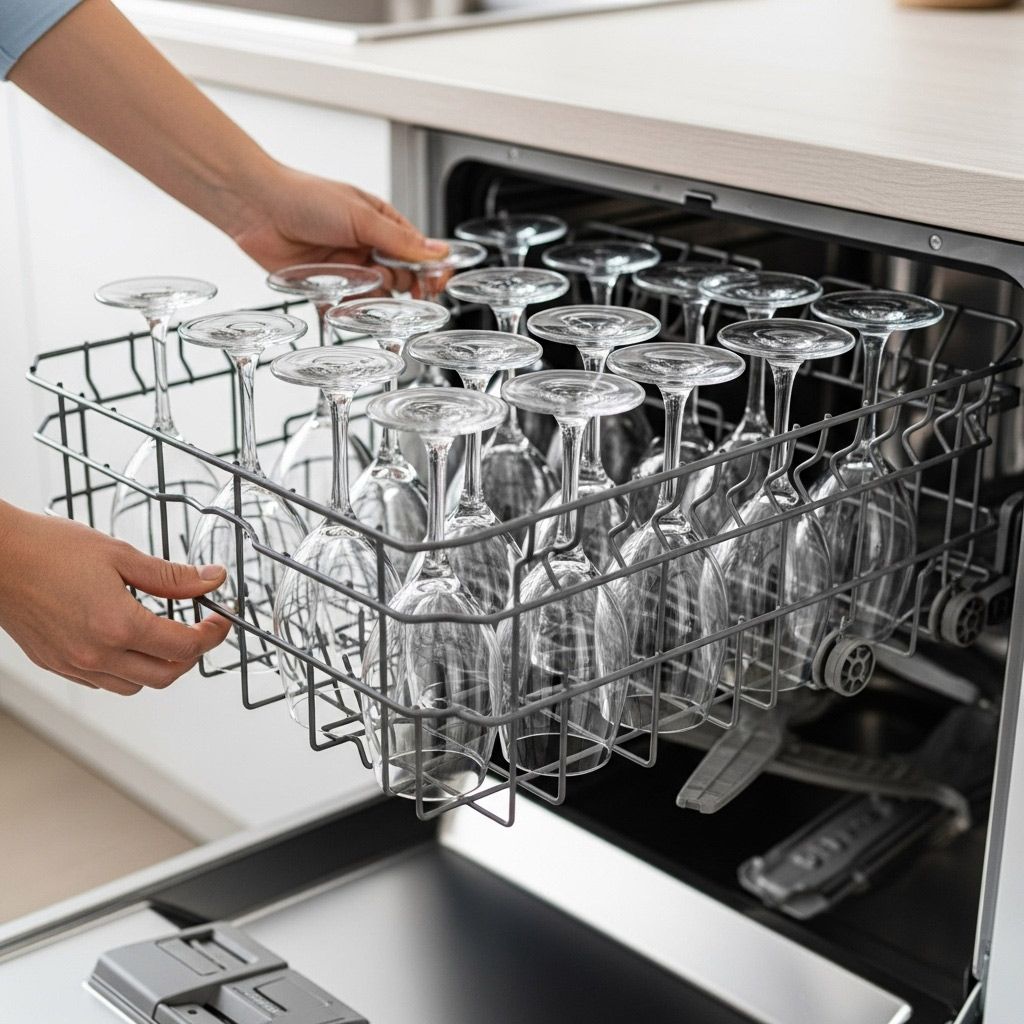
For Your Home: Appliances & Fixtures
Limescale is the mortal enemy of any appliance that uses water. It acts as an insulator on heating elements, forcing your water heater and dishwasher to use up to 25% more energy. It clogs the tiny passages in your showerheads and faucets, ruining water pressure. It builds up on your glassware, making it permanently cloudy. A water softener is the only way to protect these expensive investments from the inside out, extending their lifespan and keeping them running at peak efficiency.
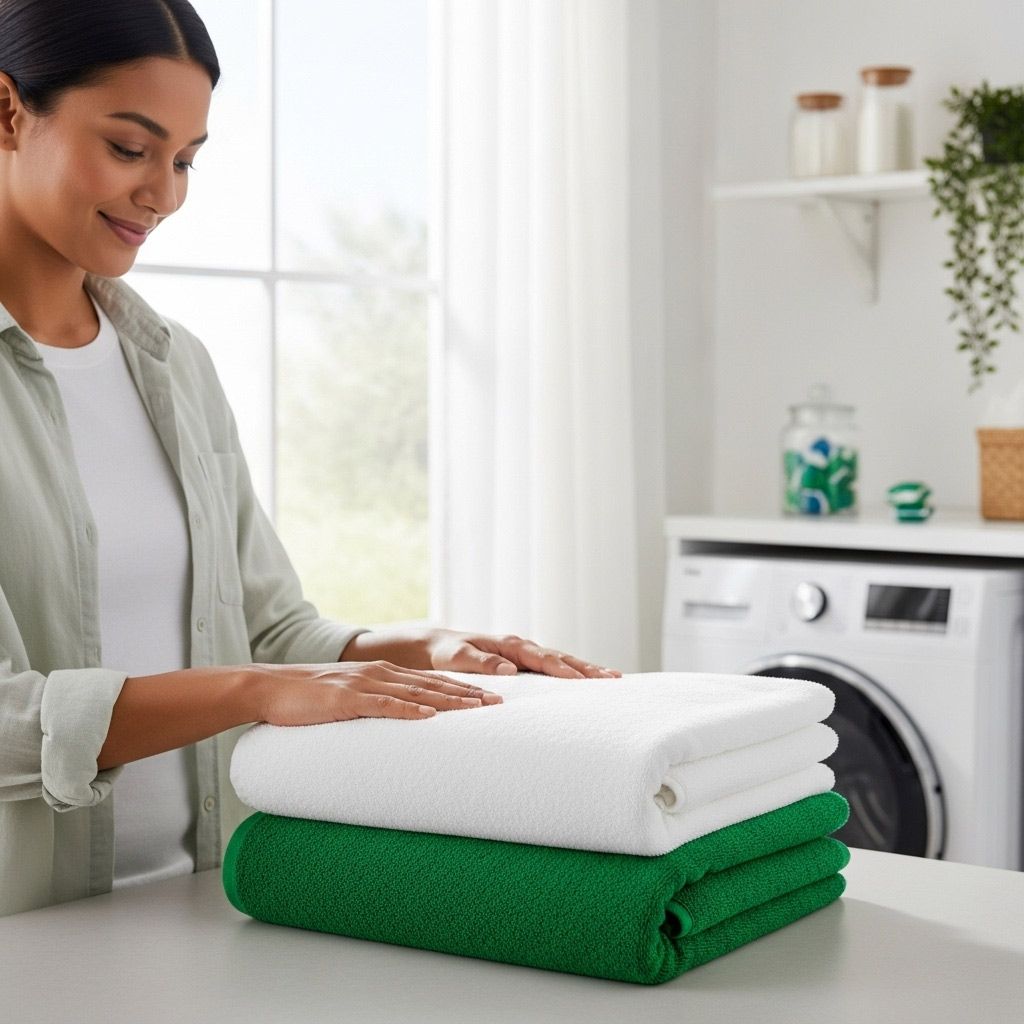
For Your Wallet: Cleaning & Clothing
With soft water, you will use dramatically less of every cleaning product you own. You’ll use 50% less laundry detergent, 70% less dishwasher soap, and far less shampoo and body wash to get a rich, luxurious lather. Your clothes will rinse cleaner, meaning whites stay whiter and colors stay brighter, extending the life of your wardrobe. The savings on soaps, detergents, and clothing can add up to hundreds of dollars per year.
Deep Dive: A Closer Look at the Damage
The negative effects of hard water are pervasive and often underestimated. To fully grasp the impact on your daily life, from its role as an eczema trigger to the science of why it makes your laundry feel like cardboard, we’ve created a dedicated, in-depth guide.
Explore the Full Story: The Effects of Hard Water on Your Skin, Hair, and Laundry »

Chapter 4: The First Step – You Can’t Fix What You Don’t Measure
You are now convinced you need to fix your hard water. Excellent. But before you spend a single dollar, you must take the most critical step in the entire process: you must test your water. Buying a water softener without knowing your exact hardness level is like buying prescription glasses without knowing your prescription. You are guaranteed to get it wrong.
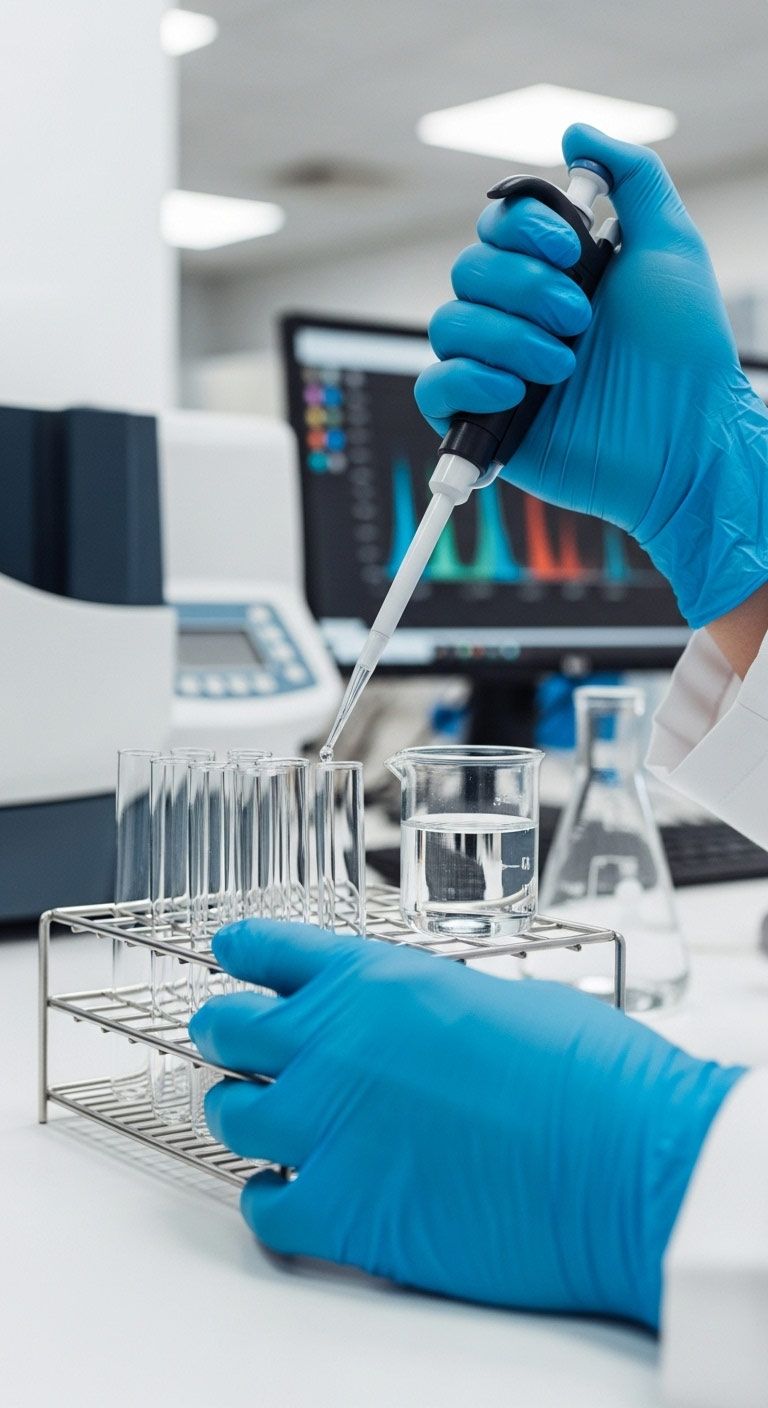
Why Guessing is a Costly Mistake
The size, cost, and type of system you need are all directly determined by your water’s specific chemistry. Your hardness is measured in Grains Per Gallon (GPG). Is your water a 5 GPG, a 15 GPG, or a monstrous 30 GPG? Does it also contain iron? The answer to these questions will determine the size of the system you need and the technology that will be most effective.
Guessing leads to buying a system that is either too small (which wastes salt and water) or too large (a waste of upfront money). Knowing your number is the key to making a smart, efficient investment.
How to Get Your Number
Fortunately, testing your water is simple and inexpensive. You have several options, from a quick DIY check to a comprehensive lab analysis. For most homeowners, a simple home test kit is the perfect balance of accuracy and affordability. We’ve created a complete guide that walks you through every option.
Learn How: How to Test for Water Hardness at Home (DIY vs. Lab Tests) »

Chapter 5: The Technology Showdown – Softener vs. Conditioner
Once you have your water test results, you will enter the most confusing part of the buying journey. You will encounter a competing technology: the “salt-free water conditioner.” The marketing is seductive, promising all the benefits with none of the salt. As an expert who has studied the science and seen the real-world results, I must be very clear: these are two fundamentally different technologies that solve different problems. This is the most critical distinction you need to understand.
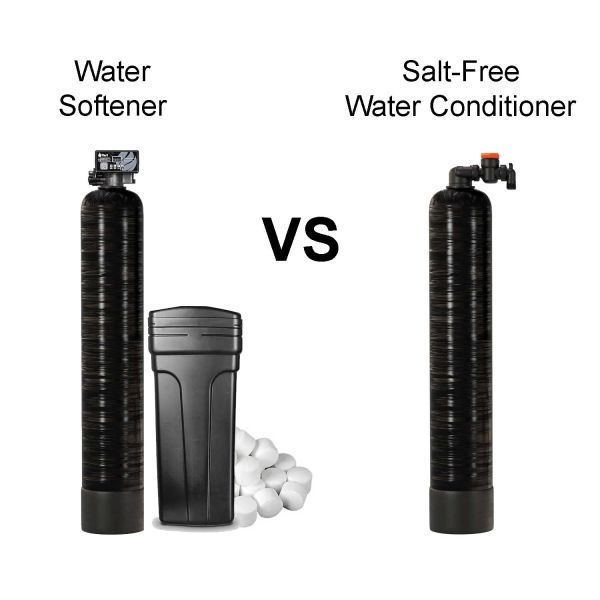
| Function | True Water Softener (Ion Exchange) | Salt-Free Conditioner (TAC) |
|---|---|---|
| Primary Job | Removes hardness minerals from water. | Alters the physical structure of minerals. |
| Produces Soft Water | Yes. | No. |
| Solves Skin & Hair Issues | Yes. | No. |
| Stops Limescale Buildup | Yes. | Yes. |
Which One Is Right for You?
If you are suffering from the tangible, daily effects of hard water—dry skin, dull hair, stiff laundry, soap scum—a true, salt-based water softener is the only solution. It is the only technology that physically removes the minerals causing these problems.
A salt-free conditioner is a niche product designed for one purpose only: to prevent limescale buildup inside pipes and on heating elements. It is an alternative to scale, not an alternative to soft water. The marketing around these products is often confusing, and I’ve dedicated an entire article to a deep-dive comparison to ensure you don’t make a costly mistake.
Read the Full Investigation: Water Softener vs. Salt-Free Conditioner »

Chapter 6: The Investment – Budgeting for a Water Softener
Now that we’ve established that a true water softener is the right tool for the job, let’s talk about the investment. The price can vary significantly, but understanding the components of the cost will empower you to build a realistic budget. I break down the total cost into three parts: the system itself, the installation, and the lifetime running costs.
1. The Upfront System Cost
The price of the hardware itself can range from $500 for a basic “big-box” store model to over $4,000 for a premium, dealer-exclusive system. The price is determined by the system’s size (grain capacity), the quality and efficiency of its control valve (the “brain”), and the brand’s business model.
2. The Installation Cost
This one-time cost can range from around $300 to over $1,000. You can save money with a DIY installation if you have strong plumbing skills, hire a general plumber, or opt for a full-service installation from a water treatment specialist. The complexity of your home’s plumbing will also be a major factor in the final price.
3. The Ongoing Lifetime Costs
This is the part many people forget. Thankfully, it’s very manageable. The monthly cost to run a modern, efficient water softener is typically just $10-$15. This includes the cost of salt (the system’s “fuel”), the minimal water and electricity used for regeneration, and a small fund for potential future maintenance.
Get the Full Financial Picture
Understanding the numbers is critical to making a confident purchase. I’ve created a comprehensive guide that breaks down every single cost factor, from the price difference between brands to the factors that increase installation fees. It also details the incredible Return on Investment (ROI) you get from saving on soaps, energy, and appliance longevity.
Read the Complete Guide: How Much Does a Water Softener Cost in 2025? »

Chapter 7: The Most Critical Calculation – Sizing Your System
This is, without a doubt, the most important technical step in the process. Choosing the correct size water softener is absolutely essential for efficiency and performance. A system that’s too small will be overworked, wasting salt and water. A system that’s too large will be inefficient and can even lead to other problems. You must get this right.
The Science of Sizing: Grains and Gallons
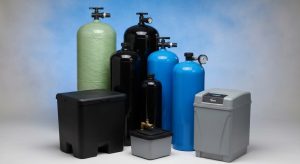
Sizing is not based on the square footage of your house or the number of bathrooms. It’s a precise calculation based on two key pieces of data:
- Your Water Hardness in Grains Per Gallon (GPG): The number you got from your water test.
- Your Household’s Daily Water Consumption in Gallons: This is easily estimated by multiplying the number of people in your home by 75 gallons.
Using these two numbers, a simple formula tells you the exact “grain capacity” your softener needs to efficiently serve your home, with an ideal regeneration schedule of about once per week.
Chapter 8: The Final Selection – Choosing Your Model
You have done all the critical homework. You know your hardness number, your budget, and the exact size system you need. Now comes the exciting part: choosing a specific model. The market is vast, but it can be broken down into two main paths: the “Open Market” of online retailers and the “Professional Channel” of local certified dealers.
In my experience, the most reliable systems are often built with one of two industry-standard control valves: **Fleck**, which dominates the open market with its proven reliability, and **Clack**, a professional-grade valve known for its advanced efficiency and durability, which is exclusively available through professional installers. Each path has its pros and cons, from DIY savings to the peace of mind of a full-service installation.
My Definitive Review of the Best Systems
To guide you through this final choice, I’ve created my most in-depth article yet: a comprehensive review of the best water softeners of the year. In it, I break down the top 5 models available on the open market, from the best overall high-tech system to the most reliable budget workhorse. More importantly, I reveal the “secret” of the professional channel, explaining the benefits of dealer-installed, Clack-based systems and how to have an intelligent conversation with a local pro.
Chapter 9: Living With Soft Water – Long-Term Care & Best Practices
Once your system is installed, your journey isn’t over. It’s just beginning. Proper care and usage will ensure your investment lasts for 15, 20, or even more years. The good news is that maintaining a modern water softener is incredibly simple. It revolves around three key areas: feeding it the right salt, knowing how to perform simple maintenance, and using the bypass valve intelligently.
1. Choosing the Right Salt
The salt you put in your brine tank is the “fuel” for the regeneration process. Using the wrong type can lead to frustrating clogs and maintenance headaches. The market is dominated by three types: pellets, crystals, and blocks. For over 95% of residential softeners, my unwavering recommendation is to use high-purity salt pellets. They are the cleanest and most reliable option, drastically reducing the risk of “salt bridges” and “mushing” that can stop your system from working.
2. Your Simple Maintenance Checklist
A water softener is not a “set it and forget it” appliance, but it’s close. Your entire maintenance routine will take you less than an hour per year. It consists of simple, predictable checks. Monthly, you’ll check the salt level. Quarterly, you’ll check the settings. And once a year, you’ll perform a quick deep clean of the brine tank and use a resin cleaner to keep the system’s “engine” in peak condition. Following this simple schedule is the key to a long, trouble-free lifespan for your system.
3. Using Your Bypass Valve Intelligently
Your softener has a bypass valve that allows you to temporarily send hard water to your home. There are two critical times to use this. First, you MUST bypass the softener when watering your garden or lawn, as the sodium in softened water can harm soil and plants. Second, you should understand the facts about drinking softened water. While it’s perfectly safe for most people, those on strict low-sodium diets should be aware of the amount of sodium added, which is directly proportional to the water’s hardness.
Chapter 10: Your First Line of Defense – Troubleshooting Common Problems
Even with the best system and perfect maintenance, things can occasionally go wrong. A salt bridge might form, a fuse might blow, or you might see an error code on the screen. The good news is that I can solve over 80% of the service calls I get over the phone, and most issues are things a homeowner can fix themselves in minutes.
From Diagnosis to Solution
As a professional, I diagnose problems by grouping them into categories: issues with the quality of the water, issues with the machine’s mechanical or electrical behavior, and issues with leaks or water levels. By following a logical, step-by-step diagnostic process, you can easily identify the root cause of any problem, from a brine tank full of water to a sudden loss of pressure.
I’ve created the ultimate troubleshooting guide, formatted as an expert Q&A, that covers the 10 most common problems. It explains not just the “what,” but the “why,” turning you into a confident first responder for your own system.
Become the Expert: The Ultimate Water Softener Troubleshooting Guide »
Bonus Chapter: The Quick Win – Erasing the Evidence of Hard Water
You’ve chosen your system, but installation might be a few days or weeks away. While you wait, let’s get a quick, satisfying win. Let’s erase the ugly stains and mineral buildup that hard water has already left on your home. Knowing how to properly clean these stains will make the “after” of your new soft water even more dramatic and rewarding.
The Secret is Chemistry, Not Scrubbing
The key to removing stubborn, chalky limescale from your glass shower doors and chrome faucets is to use a mild acid, like simple white vinegar. The acid chemically dissolves the mineral deposits, allowing them to be wiped away with almost no effort. I have developed three professional, step-by-step methods using simple household ingredients that will make your bathroom sparkle like new.
Your Journey is Complete
You’ve done it. From identifying the first signs of hard water to understanding the science, budgeting, sizing, selecting, and maintaining your system, you have completed the entire journey. You are no longer just a homeowner with a problem; you are a true expert, armed with the knowledge to make one of the best and longest-lasting investments for your home.
My goal with this guide was to give you the confidence to take control of your water. Welcome to the world of soft water. Enjoy the difference it makes every single day.

-
What is Hard Water? (Signs, Causes, and Damage Explained)
-
How to Test for Water Hardness at Home (A Step-by-Step Guide)
-
How Hard Water Is Silently Damaging Your Skin, Hair, and Laundry
-
What Size Water Softener Do I Need? A 5-Minute Sizing Guide
-
How to Clean Hard Water Stains: 3 Pro Methods for a Sparkling Bathroom
-
The Ultimate Water Softener Maintenance Checklist (Monthly, Quarterly & Yearly)
-
Should You Bypass Your Water Softener? A Guide for Gardens & Drinking Water
-
The Best Water Softeners of 2025-2026: An Expert’s Honest Review
-
Water Softener Salt: The Ultimate Guide to Pellets, Crystals, and Blocks
-
Why Does a Water Softener Need Salt? A Simple Explanation of Regeneration
-
Water Softener Troubleshooting: An Expert Q&A for the 10 Most Common Problems
-
How Much Does a Water Softener Cost? (Installation & Maintenance)
-
Water Softener vs. Salt-Free Conditioner

